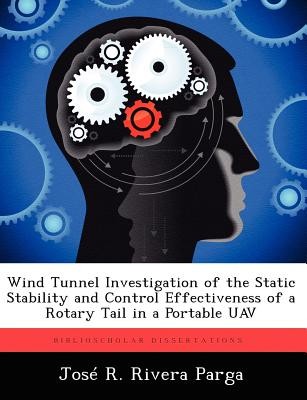
- We will send in 10–14 business days.
- Author: Jos R Rivera Parga
- Publisher: BiblioScholar
- ISBN-10: 1249578876
- ISBN-13: 9781249578871
- Format: 18.9 x 24.6 x 1.2 cm, softcover
- Language: English
- SAVE -10% with code: EXTRA
Wind Tunnel Investigation of the Static Stability and Control Effectiveness of a Rotary Tail in a Portable Uav (e-book) (used book) | bookbook.eu
Reviews
Description
The Air Force Research Lab, Munitions Directorate, Flight Vehicles Integration Branch (AFRL/MNAV) developed a manportable, carbon-fiber matrix UAV with a flexible rectangular wing of 24 span and 6 chord, 18.2" length. There is a need for the development of smaller and lighter UAV's to perform certain missions. The objective of this experimental study was to determine the behavior and the aerodynamic characteristics of rotary tails. The bird-inspired rotary tail mechanism studied enabled control of two degrees of freedom and was configured to provide elevator deflection and rotation. Its effects on the static stability and control effectiveness were measured using the Air Force Institute of Technology (AFIT) low speed wind tunnel. The yaw moment provided by each rotary tail was found to be on the same order of magnitude as a typical rudder, and in that respect it offers promise as an effective flight control scheme. However, it was also found that the side force, and consequently the yaw moment, generated by the two tail controls (elevator deflection and rotation) were strongly coupled, which could lead to challenging aircraft control issues. A benefit is that the configurations used in this thesis would reduce the storage length by 48%.
EXTRA 10 % discount with code: EXTRA
The promotion ends in 18d.07:44:08
The discount code is valid when purchasing from 10 €. Discounts do not stack.
- Author: Jos R Rivera Parga
- Publisher: BiblioScholar
- ISBN-10: 1249578876
- ISBN-13: 9781249578871
- Format: 18.9 x 24.6 x 1.2 cm, softcover
- Language: English English
The Air Force Research Lab, Munitions Directorate, Flight Vehicles Integration Branch (AFRL/MNAV) developed a manportable, carbon-fiber matrix UAV with a flexible rectangular wing of 24 span and 6 chord, 18.2" length. There is a need for the development of smaller and lighter UAV's to perform certain missions. The objective of this experimental study was to determine the behavior and the aerodynamic characteristics of rotary tails. The bird-inspired rotary tail mechanism studied enabled control of two degrees of freedom and was configured to provide elevator deflection and rotation. Its effects on the static stability and control effectiveness were measured using the Air Force Institute of Technology (AFIT) low speed wind tunnel. The yaw moment provided by each rotary tail was found to be on the same order of magnitude as a typical rudder, and in that respect it offers promise as an effective flight control scheme. However, it was also found that the side force, and consequently the yaw moment, generated by the two tail controls (elevator deflection and rotation) were strongly coupled, which could lead to challenging aircraft control issues. A benefit is that the configurations used in this thesis would reduce the storage length by 48%.


Reviews